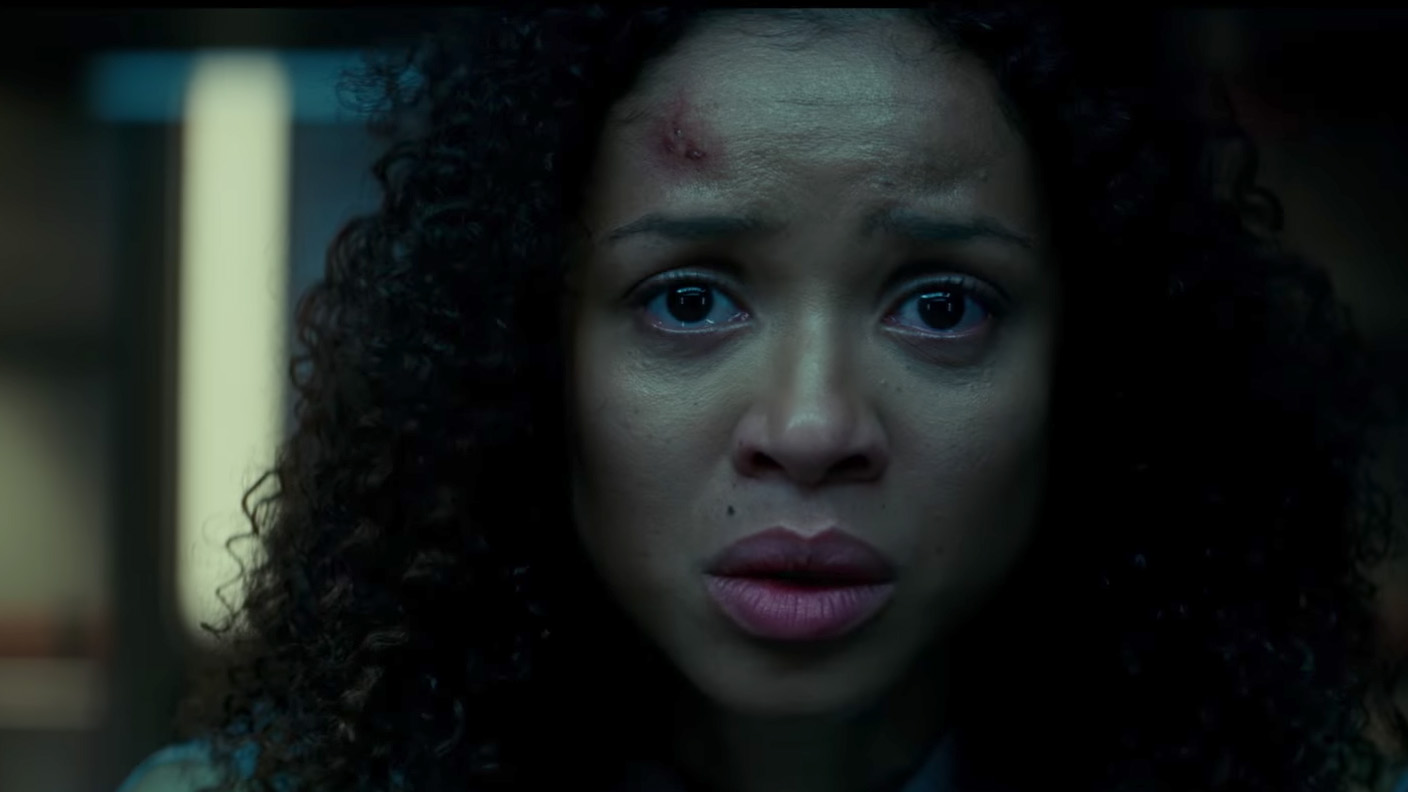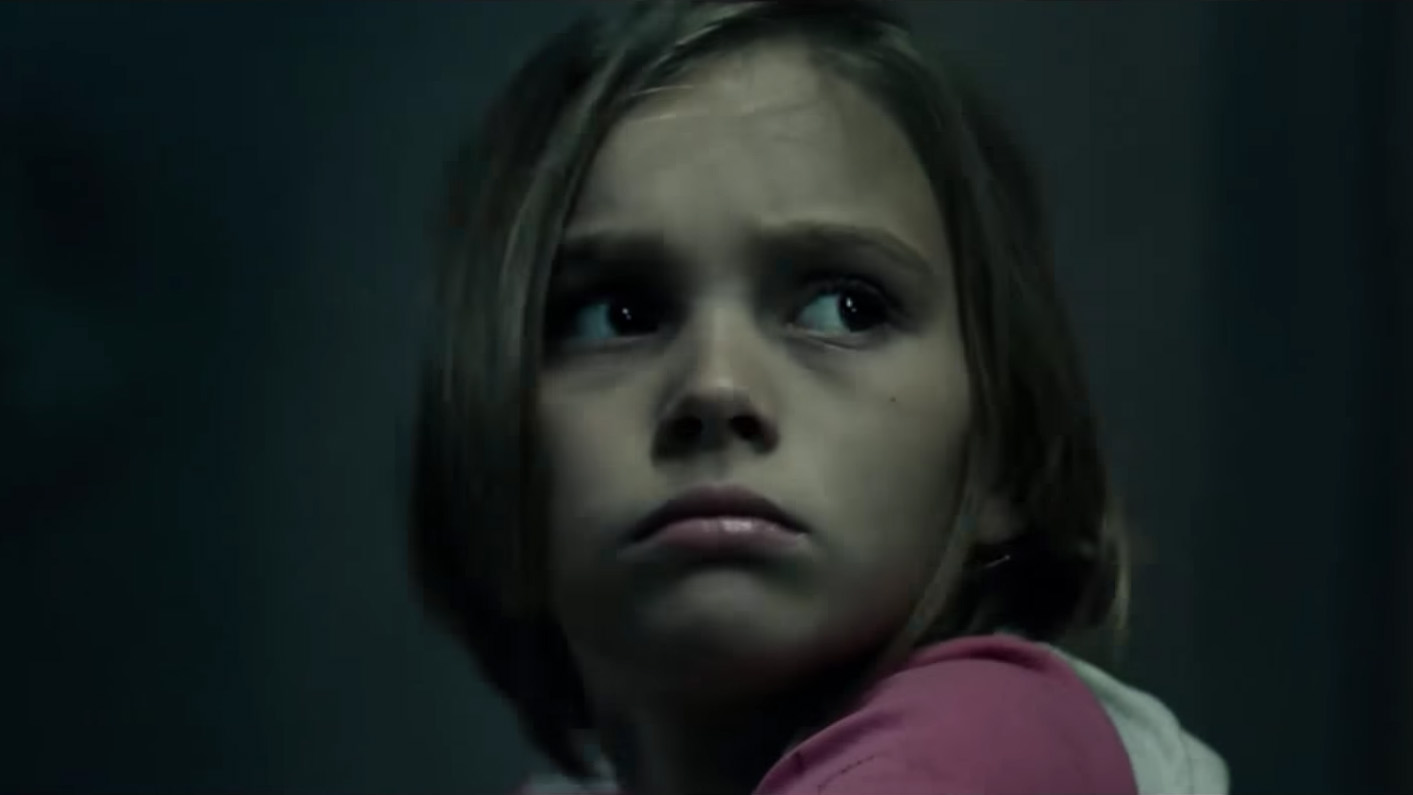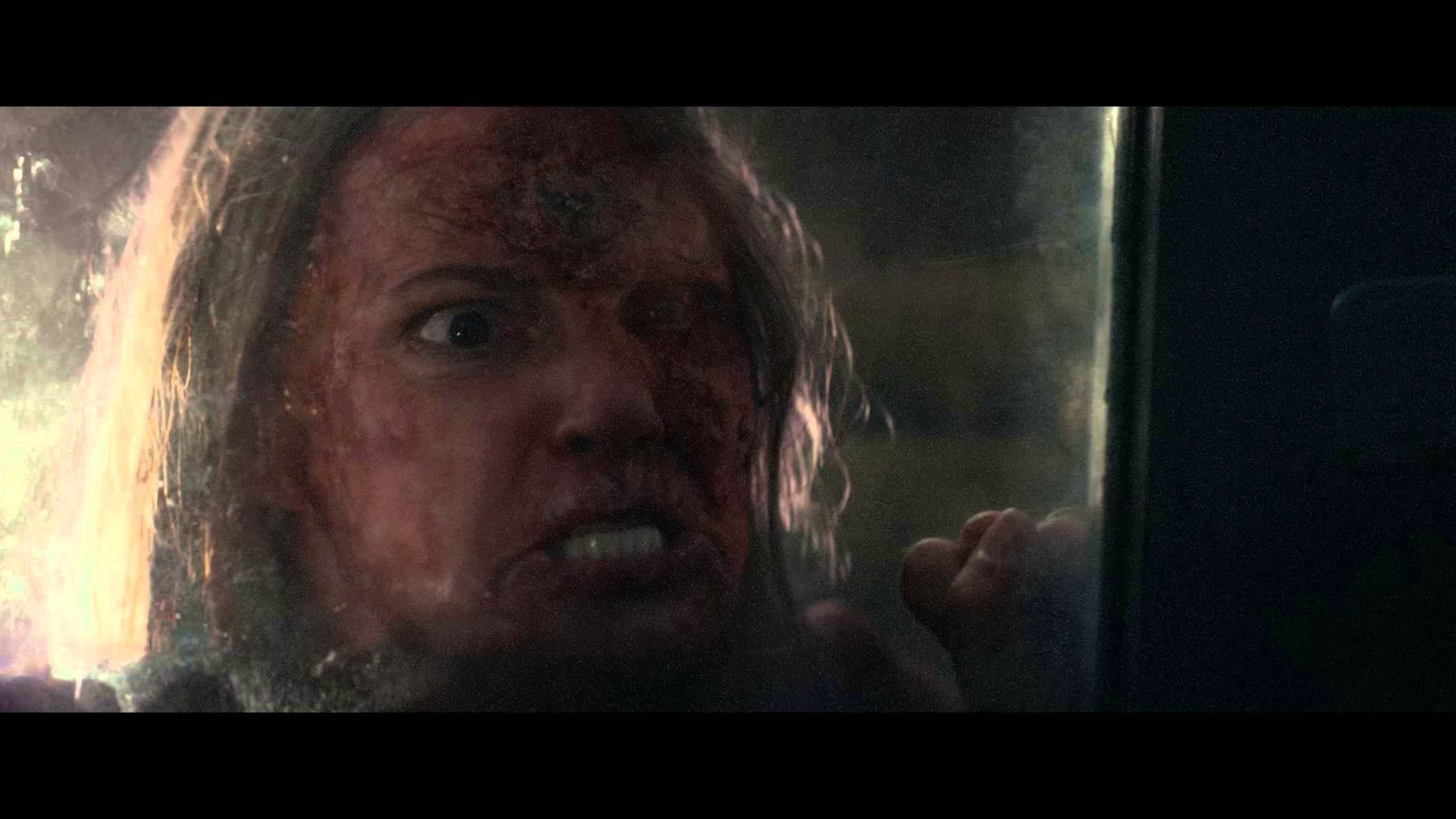10 questions I have after watching The Cloverfield Paradox
What does The Cloverfield Paradox ending actually mean?
**There are serious spoilers for The Cloverfield Paradox here so pop over to Netflix to watch and then come back if you don’t want the whole thing ruined.**
So you’ve watched The Cloverfield Paradox and chances are you might now be filled with loathing and regret for having wasted one hour and forty two minutes of your time on something so mediocre. You’re probably also, like a woman in an airlock full of unexplained water, drowning in a stack of questions that the movie purposely asks and offers up no answers for, so let’s break it down into useful bite-sized chunks. Let’s also remember that Cloverfield 4 probably won’t solve any of these so for now you’ve only got me and an internet full of theories for company. How reassuring, in a dystopian, monster-destroyed future sort of way. Here we go.
1. So, how exactly does this fit into the Cloverfield universe?

Perhaps the biggest question of them all. How does this fit into what we have already seen in Cloverfield and 10 Cloverfield Lane? Well, as officially confirmed by that ludicrously sized monster rising out of the clouds in the final scene, whether we’re in the same dimension or not, we’re in a world that could easily see New York completely trampled. Helpfully - as revealed in a Reddit post - if you line up the original found footage movie and The Cloverfield Paradox at around 18:20 in, there’s a huge connection.
Just as the crew of the Cloverfield Station finally get the Shepard particle accelerator running, young Rob (out on a New York fire escape being sad about his relationship status) suddenly hears the massive explosion that turns Cloverfield into one of the best monster movies in years. 10 Cloverfield Lane too talks about a bright flash in the sky which led Emmett to head out and literally bunker down.
There’s no doubt that firing the accelerator has caused a serious problem. This basically confirms everything that the talking head on the TV in the space station at the start of the Cloverfield Paradox says about altering reality. He warns of literal monsters and demons if the nonsense science actually works, and he’s really not wrong. The events of this movie are, it seems, at least for now, what puts the whole franchise into motion.
2. Does firing the Shepard again change anything?

So, buying into the science behind the Shepard as a particle accelerator being used to create a new energy source for a fuelless earth, the first time the tool was fired, it caused a rip in reality and sent the crew to a very similar dimension where a version of The Cloverfield Station has already failed and crash landed. *Deep breath* This also explains the original title of the movie, The God Particle, which would be the new kind of particle, the Higgs Boson, that would allegedly be the result of such science. Monsters aren’t quite as likely.
While the Shepard fails a couple of times before finally succeeding and tearing through reality, at the end of the movie Hamilton successfully fires it again which coincidentally sends the ship back to the parallel universe where it belongs. The question here then is, did that make any difference? If the first firing led to the destruction of time and space as we know it, what does the second one do? On the surface, it doesn’t look like anything has changed. The pair manage to get into a ship and are clearly en route for a world where the monsters they have unwittingly unleashed are roaming free.
Sign up for the Total Film Newsletter
Bringing all the latest movie news, features, and reviews to your inbox
3. Did the message Hamilton sent ‘home’ actually go anywhere?

Given that the next Cloverfield, code named Overlord, is apparently set in World War 2, I don’t think we’re going to get an answer to this anytime soon but did Hamilton’s heartfelt message travel across dimensions? Could her version of the Shepard send to that version of earth and did it change anything? I’m not sure how you would feel getting a message from an alternate dimension version of yourself but I think it would probably have sent that universe’s Hamilton into serious confusion. Would she have followed the instructions and prevented the death of her own children? Let’s say she did, that no one died and that that is the only happily ever after that Cloverfield has allowed thus far in the franchise.
4. Why does the ventilation room fill with water…?

For the same reason that Jensen arrives plugged into the insides of the Shepard like a living, screaming version of a Hive central heating system. Both ships existing in the same universe drives reality out of whack, meaning that the ventilation chamber suddenly fills with the same water as the crashed version and somehow Jensen arrives squished into the walls. This really doesn’t explain the fact that Chris O’Dowd loses his (now sentient) arm in the wall or that the Gyroscope ends up inside a dead crew member but it at least suggests that the longer that the Shepard stays in that reality, the worse it gets. This isn’t meant to exist here and the universe is finding a way to make sure it’s destroyed as fast as possible.
5. Who was Volkov talking to?

Those expecting seriously gruey body horror when Volkov started playing with the skin around his eye might have been initially disappointed but things got interesting when he started talking to himself when he was looking in the mirror. Unlike Jensen arriving in the walls, Volkov might actually have channelled the alternate dimension’s version of himself directly into his brain. It’s a little unclear but the problems he had with Schmidt - who may or may not have been involved in espionage like his parallel world self - were certainly escalated when he tried to murder him. Was this a case of alternate Volkov blaming original Schmidt for the crimes of parallel Schmidt? No, I can’t believe I just wrote that sentence either.
6. Is that space pod the UFO from the end of Cloverfield?
While that shot of the space pod should be a triumphant ending as Hamilton and Schmidt escape the station, what we actually see as it disappears into the clouds is a leviathan of a monster rising out of the depths. While “oooh, monster” might be your first thought, I was more concerned with what the pod looked like as it shot through the air. It doesn’t look dissimilar to the unidentified object landing in the water in Cloverfield as Rob enjoys an idyllic day at the pier with his girlfriend weeks before the madness happened. This was pored over by Cloverfield fans for hours. Was this the monster landing? Or if not, what was it?
There are a few problems if this is Hamilton and Schmidt. Namely, that the earth is clearly already overrun with monsters in the Cloverfield Paradox. Hamilton’s husband has been driving around a shattered earth rescuing young children. This is absolutely not the world of perfect dates and harmony we see on the tape in the original movie. Unless Hamilton and Schmidt enter a wormhole between the clouds and earth, or Rob is in another parallel universe, this isn’t exactly the narrative tied in a pretty bow.
7. What’s going to happen in that bunker? Who are the little girl’s parents and why does it matter?

First off, it’s important to note that the bunker that Hamilton’s husband Michael takes the little girl, Molly, to is not the one occupied by John Goodman in 10 Cloverfield Lane. It is an interesting reference, that humans are going underground to avoid the monsters above, but it’s not necessarily a direct link to Mary Elizabeth Winstead’s ordeal below ground. Why the parents are alive though and why it all matters, is still to be explained but again, I don’t see it happening in Cloverfield 4. It’s not going to stop there though if JJ Abrams has anything to do with it so these might be vital seeds to future episodes that we’ll just have to wait and see.
8. Why is the same actress in both The Cloverfield Paradox and 10 Cloverfield Lane?

Yep, that news reporter who was asking the author of The Cloverfield Paradox on TV is played by the same actress as the woman who arrives at the door of the bunker in 10 Cloverfield Lane. The casting of Suzanne Cryer is obviously no accident but is this further leaning on the idea of parallel universes or has the reporter somehow gone insane and arrived at the shelter door? I’d really prefer the latter to make any sense of the narrative that Abrams and co are building. Infinite realities and parallel universe theories can only go on so long before someone eventually calls bullshit on proceedings. I’d rather that this particular movie was just a blip on an otherwise excellent franchise record but we’ll have to wait and see exactly which path they take.
9. Why are the crew so ridiculously inept?

This might be an odd question but have these human beings actually ever actually been to space before? Why does no-one remember how the uncoupling system works until the captain has to dramatically surprise-die? Also, when everything goes to hell, why does no-one think of working out where they are by star positions? Why do they have to find a magic football in someone’s guts before they - ASTRONAUTS - think of this? This is a narrative that appears to demand that these space travellers are entirely inept. I’d like to say that this is some kind of reflection on our innocence as we explore the Cloververse but it might just be ludicrously bad exposition…
10. Why did Hamilton have to go to the Cloverfield Station anyway?

The start of the Cloverfield Paradox sees Hamilton discussing with her husband the enormity of the task and how she really doesn’t want to go to the station. This assumes that Hamilton is a key part of the team, a vital cog in the functioning of a crew that could never be replaced. However, as she’s a communications assistant, why she couldn’t be replaced with someone else is an interesting thought. Was the fact that she had to go, more about the idea that she had to be the one to deliver the message to the alternate version of herself? Was her mission always to save the children of the other Hamilton? It’s another theory to toss on the enormous pile of unresolved questions. Just remember, if it all becomes to much, just head back and watch 10 Cloverfield Lane.
Louise Blain is a journalist and broadcaster specialising in gaming, technology, and entertainment. She is the presenter of BBC Radio 3’s monthly Sound of Gaming show and has a weekly consumer tech slot on BBC Radio Scotland. She can also be found on BBC Radio 4, BBC Five Live, Netflix UK's YouTube Channel, and on The Evolution of Horror podcast. As well as her work on GamesRadar, Louise writes for NME, T3, and TechRadar. When she’s not working, you can probably find her watching horror movies or playing an Assassin’s Creed game and getting distracted by Photo Mode.



